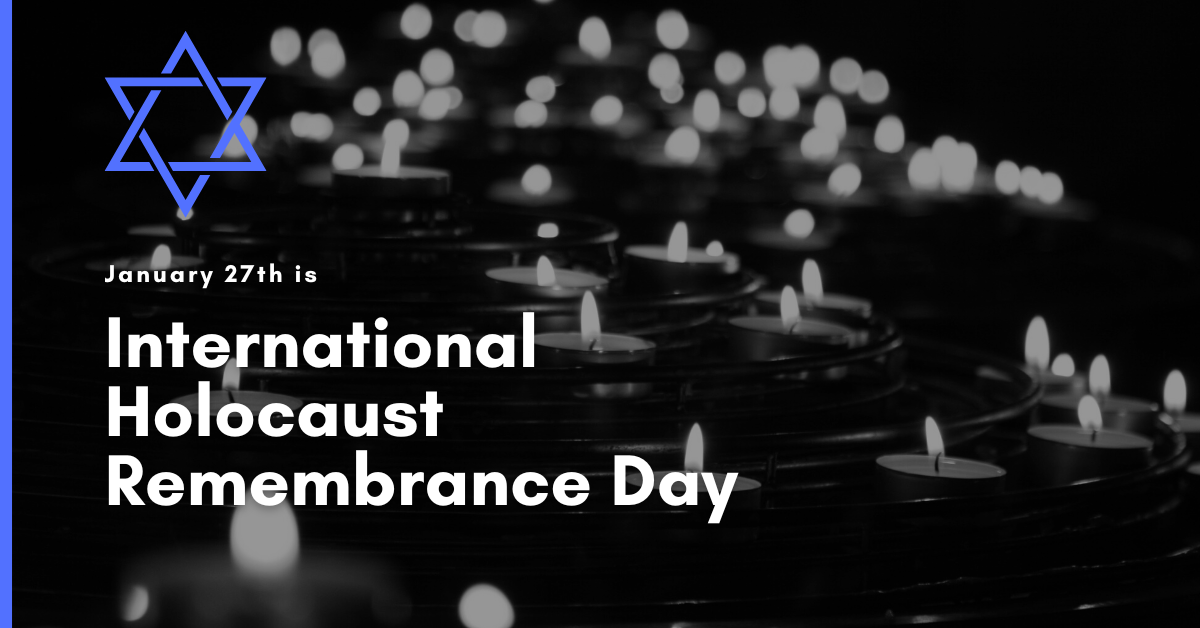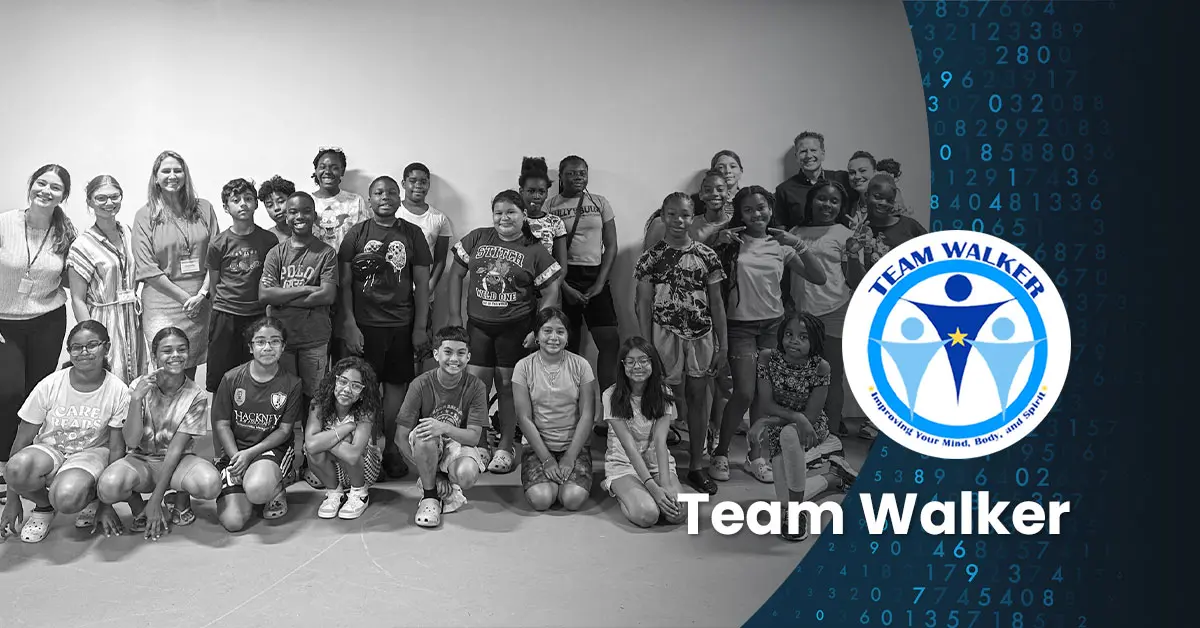January 27th is designated by the United Nations General Assembly as International Holocaust Remembrance Day (IHRD). Since 2005, the UN and its member states have held commemoration ceremonies to mark the anniversary of the liberation of Auschwitz-Birkenau and to honor the six million Jewish victims of the Holocaust and millions of other victims of Nazism.
On November 1st, 2005, the UN General Assembly adopted resolution 60/7 to designate January 27th as International Holocaust Remembrance Day (IHRD). The date marks the liberation of Auschwitz-Birkenau and is meant to honor the victims of Nazism. The exact resolution supports the development of educational programs to remember the Holocaust and to prevent further genocide.
Resolution 60/7 not only establishes January 27th as “International Day of Commemoration in memory of the victims of the Holocaust,” it also rejects any form of Holocaust denial. The resolution encourages member states of the UN to actively preserve sites that the Nazis used during the “Final Solution” View This Term in the Glossary (for example, killing centers, concentration camps, and prisons.) Drawing from the Universal Declaration of Human Rights, the resolution condemns all forms of “religious intolerance, incitement, harassment or violence against persons or communities based on ethnic origin or religious belief” throughout the world.
The genesis of the Holocaust is best understood as the convergence of isolated and violent attacks on various German and European Jewish communities (initiated by members of the nascent Nazi Party, with thousands of ordinary non-Jewish citizens partaking in the violence) combined with a series of laws enacted that reduced, and eventually removed most civil liberties of the Jewish citizenry. Additionally, anti-Jewish racial laws, such as the Nuremberg Laws of 1935, stripped Jews of their German citizenship, prevented intermarriage with Aryan gentiles, and prohibited Jewish doctors from practicing in medicine in German institutions. Only three years later, in 1938, anti-Jewish government decrees metastasized to Austria, France, Italy, and Poland, culminating in the Kristallnacht – Night of the Broken Glass, a torrent of anti-Jewish pogroms erupted in Germany, Austria, and the Sudetenland where 200 synagogues destroyed, hundreds of thousands of Jewish texts burned, 7,500 Jewish shops looted, and 30,000 male Jews were apprehended and deported to concentration camps (Dachau, Buchenwald, Sachsenhausen). By 1940, numerous death camps were fully operational, among them Auschwitz and Treblinka in Poland, while mass deportations of Jews from Norway, Italy, Poland, Ukraine, France, Holland, Greece, Hungary, and Romania continued without end.
The Nazi regime planned, organized, and initiated the Final Solution. But what motivated ostensibly normal, civilized people to partner with the Gestapo to become complicit in this objective? In Hitlers Willing Executioners – Ordinary Germans and the Holocaust (1993), Daniel Jonah Goldhagen analyzes German history and the secularization of medieval religious practices and draws several controversial conclusions about the post-WWI German psyche. The question of German complicity in the final solution is addressed by Goldhagen, but a true answer will never be found.
Here are a few actual examples of how supposedly civilized members of German society- the common folk- quickly and dispassionately morphed into willing participants in the Nazi’s ultimate goal of establishing an Aryan master race through the total eradication of the Jewish people and their collective history from the face of the planet:
- In 1938, The Oberkommando der Wehrmacht or OKW (Wehrmacht High Command, Armed Forces High Command) was part of the command structure of the German armed forces; their leaders instigated the pogrom that destroyed and defaced synagogues, Jewish schools, and Jewish shops and businesses in a Berlin suburb, which has a large Jewish population. Jewish stores were looted and destroyed by Molotov cocktails, crowbars, gasoline bombs, and cars driven through windows. Four synagogues were set afire, windows smashed, and sprayed with anti-Semitic graffiti.
- Members of the Hitler Youth (“Hitlerjugend”) and the Jungvolk (boys ages ten to fourteen) joined thousands of adult rioters in a “Days of Rage” demonstration, calling for the immediate execution and extermination of all Jews and non-Aryans. The rioters were not members of the German military; they were regular working-class adults and their children who were sucked into the vortex of hatred and violence directed at their Jewish friends, neighbors, and associates.
- In 1936, a Jewish-owned grocery store was attacked in Neckharafen, a small village outside of Stuttgart by 2 members of the Parti Rexist, a band of militant Nazi collaborators. They opened fire on the market, wielding semi-automatic weapons, German Mauser rifles, and handheld firebombs. They entered the store and fatally shot the owner, an employee, a customer, and a German policeman before escaping through a back exit.
- On the night of December 28th, 1937, the seventh night of the Jewish holiday of Hanukkah, a masked man wielding knives and a machete broke into the home of a Rabbi, where a secret Hanukkah party was underway, and began stabbing the guests. Five men were wounded, two of whom were hospitalized in critical condition. Three months after the stabbing, the most severely injured stabbing victim, aged 72, died of his wounds. His head was nearly severed in half after being struck at full force by the machete.
I would ask the reader to review and contemplate the historical events described above. And recognize that there were literally thousands of similar occurrences – countless examples of the most barbaric behavior ever expressed by the human species.
Consider the following the observations of Hanna Arendt (1906-1975), a journalist, political philosopher, author, and Holocaust survivor who was commissioned by New York Magazine in 1962 to travel to Jerusalem to cover the trial of Adolf Eichman, chief architect and driving force to annihilate the Jewish race. Eichman was the most notorious Nazi war criminal ever tried in public. If convicted, he would receive the death penalty.
Hanna Arendt’s reporting of the trial (worthy of an entire history course itself) was eventually published in book form as Eichmann in Jerusalem: A Report on the Banality of Evil- a reflection on “the lesson that this long course in human wickedness had taught us- the less of the fearsome, word-and-thought-defying banality of evil’.
Arendt later wrote, “The trouble with Eichmann was precisely that so many were like him, and that the many were neither perverted nor sadistic, that they were, and still are, terribly and terrifyingly normal. From the viewpoint of our legal institutions and of our moral standards of judgment, this normality was much more terrifying than all the atrocities put together (emphasis added)”.
Arendt’s understanding of Eichman in particular, and the enormity of the Holocaust in general, is that “regular” people- despite the appearance of normality (and the presumption of some innate civility), may also possess the same sadistic, animalistic, and indeed, banal tendencies as a mass murderer like Eichman or Pol Pot, or the common folk who did not hesitate for a moment to participate in the madness of crowds.
The great theologian Reinhold Niebuhr summarized the contradictory nature of the human condition brilliantly, writing that “Man’s capacity for justice makes democracy possible, but man’s inclination toward injustice makes democracy necessary” (Children of Light, Children of Darkness, 1944)
Please return to the four historical examples I provided of overt Jew hatred committed by regular people who Hannah Arendt would undoubtedly deem “terribly and terrifyingly normal.” Given what we know of pre-Holocaust Germany and Poland, are these few stories that shocking, after all? I believe they all fit quite nicely into the historical vector that culminated in the Shoah. Think about the famous photo of a Jewish man being held down as his beard is shorn by several jocular men in street clothes, as they express delight at the sight of an innocent Jew being humiliated in public.
Guess what? The stories I presented are fabricated. Dates, locations, names, and descriptions were changed to better fit the template of a “Holocaust story” of the 1930s.
The truth: these events happened, but not in Berlin or Stuttgart or Warsaw or anywhere else in the smoldering cauldrons of Europe in 1936 or 1938.
All of these horrific events occurred here, in the United States of America within the last three years:
- The first story about looting and destruction of apparently Jewish-owned stores and businesses, the fire-bombing and desecration of four synagogues, and physical attacks on Jewish people actually happened in June 2020, in Los Angeles, following the death of George Floyd and the explosion of violence and destruction that detonated nationwide after that event. In Philadelphia, BLM protesters called Jews the “synagogue of Satan” and “Amalek”; many were physically attacked and harassed. These events were modern-day pogroms. (https://jewishjournal.com/news/323844/philadelphia-blm-protesters-call-jews-synagogue-of-satan/)
- BLM/M4BL orgs and their partner groups (such as “Dream Defenders”) met with, have connections with, participated in anti-Israel demonstrations in “Palestine” with, and disseminate anti-Jewish, anti-Israel propaganda of the Marxist, murderous designated terror group Popular Front for the Liberation of Palestine (“PLFP”) and PFLP front groups (including Al Haq and DCI-Palestine). BLM, Antifa, BDS, and other anti-Israel groups joined together in nationwide “Days of Rage” rallies and protests in June -July 2020. Many turned violent with innocent people physically attacked. ( https://zoa.org/the-blm-organization-files/)
- A Jewish-owned kosher grocery store in Jersey City, NJ was stormed by two heavily armed, self-described Jew haters in December 2019. The terrorists shot and killed an undercover NJ detective, and then attacked the grocery store, killing three innocent people. Reporters interviewed several local Jersey City residents within days after the attack. Sadly, several people interviewed voiced unexpected and surprising solidarity with the killers, expressing an abnormal degree of “understanding” for what they did while making bigoted, anti-Jewish comments while on camera.
- A man wielding a large knife and machete stormed the home of a Monsey, New York rabbi on the seventh night of Hanukkah, on December 28th, 2019, and not 1937. Rabbi Josef Neuman, 72, succumbed to injuries sustained during the attack and died three months later. https://www.nytimes.com/2020/03/30/nyregion/rabbi-monsey-attack.html
Days after the attack, a letter sent to then-Governor Andrew Cuomo by four Jewish lawmakers stated, “Orthodox Jews are being regularly assaulted, menaced, stabbed and murdered in increasing numbers. Simply stated, it is no longer safe to be identifiable as Orthodox in the State of New York. We cannot shop, walk down a street, send our children to school, or even worship in peace.”
Despite the benevolent intentions of this day of commemoration, one must view the present through the lens of history, and ask what the future holds for the Jews in America, Israel, and the world?
According to the Anti-Defamation League (ADL), 2021 was the highest year on record for documented reports of harassment, vandalism, and violence against Jews. They predict similar statistics for 2022. Police data from New York City shows that anti-Semitic incidents more than doubled in the last two years. There were 263 documented attacks in 222, or one every 33 hours. College campuses, including the Ivy Leagues, have become hotbeds of anti-Semitism, often veiled through the demonization of Israel and Zionism. In fact, anti-Semitism, in the form of Anti-Zionism has become so endemic on college campuses (taking the form of graffiti, verbal and physical abuse, overt protests and college-sanctioned declarations calling for the destruction of Israel, and the inclusion of anti-Israel rhetoric and historical revisionism in DEI (Diversity, Equity, and Inclusion) syllabi, among many others) that fifty-five percent of students stated they hide their support for Israel, and 73% report hiding their Jewish identity on campus. Another survey shows that almost 80% of students have experienced campus anti-Semitism personally, having been either the victim or witness of the event.
How can one faithfully commemorate the victims of the Shoah while recognizing that many conditions that led to the Holocaust in the Germany of 1936 still exist in 2023?
I struggle to answer this question and to devise a solution to the world’s oldest hatred: Anti-Semitism.
People of goodwill and faith must make a commitment to challenge bigotry, hatred, and anti-Semitism through acts of courage. The willingness to demonstrate deliberate courage and humane bravery must motivate any attempts to honor the memory of 6 million Jews who perished in the Holocaust.
I’d like to conclude this essay with a true story. Every detail is factual; nothing has been altered or modified beyond the original narrative.
In December 1944, the 106th Infantry Division of the United States army, comprised of three additional Regiments, landed in France, and traveled by truck to Belgium, near the German Border. There, the 422nd, 423rd, and 424th regiments assumed positions and braced for imminent combat with Nazi troops. General William Sherman stated that “war is hell” and indeed, a nightmare was about to begin.
On December 16th, the 422nd regiment was attacked by the Germans in what became known as the Battle of the Bulge. Part of the regiment was cut off and surrounded by German troops. They held their position until December 21st but were then compelled to surrender. Their German captors forced the men of the 422nd to march 50 kilometers on foot in freezing weather to Gerolstein, Germany. There the men were loaded into box cars with no food or water and traveled for four days until reaching Bad Orb, Germany. Some died before their arrival. After spending several weeks in Bad Orb, the Americans (numbering several thousand) were divided into three groups: officers, noncommissioned officers (NCOs), and enlisted men.
The NCOs were shipped to a German POW camp, Stalag IXA in Zeigenhain. There were 1,292 men in this group. Master Seargent Roddie Edmonds assumed command of the 422nd as the highest-ranking NCO among them. He was 25 years old.
The German policy toward American Jewish soldiers emulated the treatment of indigenous German Jewish citizens: single out the Jews (in this case, the Jewish POWs) and deport them to extermination or slave labor camps.
In January 1945, the commandant of Stalag IXA, Major Siegmann, ordered all Jewish POWs to report the next morning. By this time, American soldiers knew the Germans were murdering Jews, and separating them would put them in great danger. When morning arrived, Master Sergeant Edmonds ordered all 1,292 of his soldiers – Jewish and non-Jewish-to stand together when the Jewish soldiers were to report.
When Major Siegmann saw all the camp’s inmates standing in front of their barracks, he said to Edmonds (in English): They cannot all be Jews.
Edmonds replied: We are all Jews.
According to numerous witnesses, Siegmann drew his pistol and jammed it into Edmond’s forehead, and said, “I’ll give you one more chance. Have the Jewish men step forward or I will shoot you on the spot”.
Master Sergeant Roddie Edmonds stated, “According to the Geneva Convention, we have to give only our name, rank, and serial number. If you shoot me, you will have to shoot all of us. The war is almost over, and after the war, you will be tried for war crimes. We are all Jews here.”
The German officer stalked away. There were 200 Jewish GIs among the almost 1300 American POWs. Their lives – and the lives of their future families and progeny, were saved by Edmonds’ act of courage and by the awareness that international law meant something.
Like many righteous Gentiles who survived the war, Edmonds almost never spoke of his war time experiences. He never discussed them with his wife and children, and they knew little of his incredible heroism. For Roddy Edmonds, his military exploits were simply something he chose not to talk about.
Years after Edmonds passed away, a strange chain of events motivated his son Chris to try and locate several soldiers who served with his father. Eventually, several Jewish veterans told Chris Edmonds the details of what they witnessed on that fateful day in January 1945.
Chris Edmonds: “When Dad got the orders and told his men that they were not giving up the Jewish soldiers, they could have said no. When the commandant pressed the gun against my father, some of the men could have pointed out the Jews. None of them did that. They all stood together. What he did [that morning] sent an incredible bolt of hope through the men. They saw they could resist. They saw they could survive.”
Master Sgt. Roddie Edmonds and his fellow POWs were liberated on March 30th, 1945. In the Jewish calendar, it was the 16th day of Nisan, 5705: the second day of Passover, the festival of freedom.
The frightening explosion in anti-Semitism must be confronted and challenged through acts of courage. We are all Jews.
On this day of remembrance may we be merited to demonstrate true courage and bravery like Roddie Edmonds and those like him, who risked their lives to save the Jewish people.

 Previous
Previous






